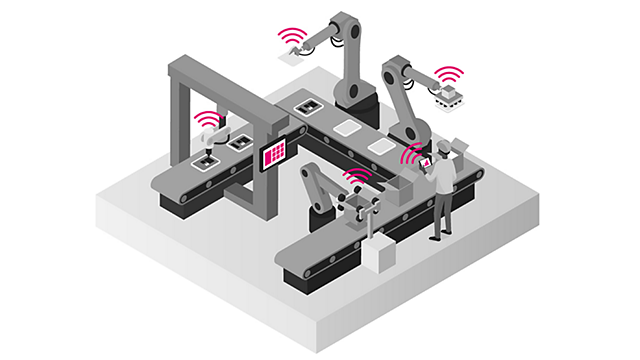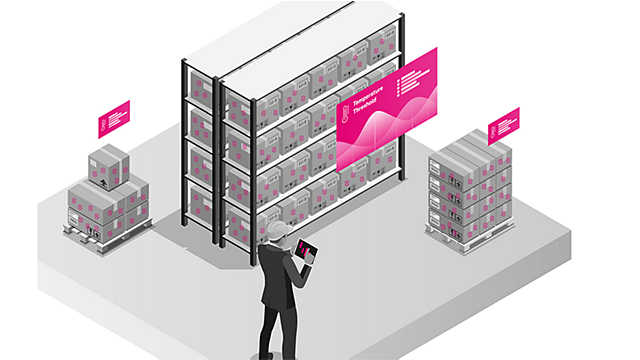
Why mid-band matters.
Not all radio spectrum used in 5G is the same. Different spectrum bands have different characteristics, so the bands and quantity of spectrum deployed in a 5G network will influence the network’s capabilities. Arguably the most useful band for 5G is mid-band, the range between 1 GHz and 6 GHz.
Compared with low-band, there is more mid-band spectrum so it can deliver much faster throughput speeds and has far greater capacity. But available mid-band spectrum isn’t easy to come by because so much of it is allocated for other uses besides cellular. Carriers have spent tens of billions to purchase newly allocated mid-band spectrum at auction—not to mention the billions more it costs to clear and deploy it.
Mid-band offers a balance of speed, capacity, coverage, and penetration that’s especially great for densely populated metropolitan areas where connectivity demand is high.
5G mid-band has faster speeds and greater capacity than low-band, plus it offers a much larger coverage area than high-band millimeter wave (mmWave) spectrum. And unlike mmWave, mid-band can penetrate walls.
5G mid-band offers a balance of speed, capacity, coverage, and penetration that’s especially great for densely populated metropolitan areas where connectivity demand is high.
One spectrum band, three usage categories.
To understand how useful mid-band spectrum is, it helps to consider the three primary usage categories in the planned evolution of 5G. Current and future use cases for 5G can be categorized into three main buckets: enhanced mobile broadband (eMBB), critical IoT with ultra-reliable low-latency communication (URLLC), and massive IoT with massive machine-type communication (mMTC). Mid-band spectrum is the one flavor of 5G that’s likely to be employed for all three of these usage categories.
Category 1: enhanced mobile broadband (eMBB).
The eMBB usage category is what it sounds like: an iterative enhancement of the mobile broadband we’re already familiar with. So its use cases include phones, tablets, hotspots, laptops, and fixed wireless. The high-speed upload and download capabilities will also support initial augmented reality use cases and mobile work applications like virtual desktops or digital workspaces.
Faster throughput and much greater capacity will make applications with dense data types, like video, work better and more smoothly. To achieve this, the eMBB usage category will use mid-band along with low- and high-band spectrum.

Category 2: critical IoT with ultra-reliable low-latency communications (URLLC).
A second usage category is critical IoT with ultra-reliable low-latency communications (URLLC). This will include use cases with very little tolerance for latency or for interrupted or dropped signals. So think of a smart grid, smart factories, autonomous vehicles and devices, remote robots and drones, mobile bio-connectivity, and lots and lots of other use cases, including ones we haven’t yet imagined.
Very high reliability and very low latency will support the next generation of automation and connected intelligent solutions. For this, critical IoT will primarily take advantage of both mid-band and mmWave spectrum.

Category 3: massive IoT with massive machine-type communications (mMTC).
The third usage category is massive IoT with massive machine-type communications (mMTC). This usage category is all about sensing on a huge scale—and especially the colossal amounts of data it will produce. Massive IoT capabilities will enable the automation and connectivity of many use cases involving monitoring, like inventory management, logistics, and smart home applications. It’ll also support new kinds of intelligent wearables. The use of AI to interpret all that data will become commonplace.
With massive IoT, the digital footprint of your business is likely to grow dramatically. This usage category will rely on low-band and mid-band spectrum.

T-Mobile 's advantage.
One of our big advantages over our competitors is a durable lead in our network buildout and coverage. Here’s why.
For some time, we’ve been using a “layer cake” analogy to describe the network approach we pioneered. It’s a strategy our competitors are gradually adopting as they realize the limitations of relying too heavily on high-band spectrum to build out a 5G network.
The analogy works like this. Think of low-band spectrum as the bottom foundation layer of the cake. It has a long reach, with the ability to cover very large areas and penetrate walls. With it, we can bring 5G virtually everywhere across the country, even to far-flung places like small towns and rural areas. The tradeoff is it doesn’t deliver the fastest speeds of the frequencies higher up in the spectrum.
The top layer of the cake is high-band mmWave spectrum, which is super fast and has enormous capacity, but doesn’t travel very far and requires a direct line of sight between the user and the radio. As you can imagine, the signal is easily obstructed. But because of its capacity, it’s good for high-density situations like a bustling city street corner or a crowded stadium.
225MM
people covered by our Ultra Capacity 5G—nearly twice those covered by Verizon's Ultra Wideband.
It’s the 5G mid-band spectrum, the middle layer of the cake, that brings together the best of both worlds: long range for broad coverage, with high capacity and speed and the ability to penetrate walls. This is why mid-band has been called the “sweet spot” spectrum for 5G.
Eventually all 5G in the U.S. will likely use some version of the layer cake approach. But
We’ve already used our layer cake approach to bring Ultra Capacity 5G to 225 million people—nearly twice the people covered by Verizon's Ultra Wideband. And our Extended Range 5G covers nearly everyone in the country—more than 315 million people. Our 5G network coverage area is nearly twice as large as AT&T 5G, and nearly 5 times the coverage of Verizon 5G.
It’s about the combination.
Once 5G matures, when you’re out in the country and you reach the suburbs, you won’t just suddenly switch from low-band to mid-band; rather, you’ll get both stacked together. And when you continue into the city to an area covered by mmWave, that high-band spectrum will be added to the low- and mid-band spectrum that covers that same area too, so you’ll have access to all three bands.
This is thanks to a technology called carrier aggregation.
The vast amount of spectrum and wider set of spectrum bands available to be stacked together are unique to 5G. These are among the factors that give the network flexibility to operate in more environments and support a much broader range of use cases than 4G. Mid-band is critical to 5G spectrum because it bridges the speed, capacity, coverage, and penetration gaps between low-band and mmWave.
With that balance of speed, capacity, coverage, and penetration, a rich 5G mid-band network offers more versatility and more utility than any network that’s lacking in mid-band spectrum.
Capable device required; coverage not available in some areas. Some uses may require certain plan or feature; see